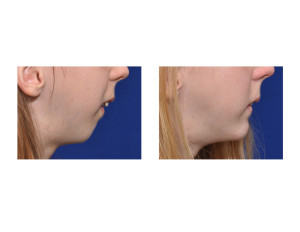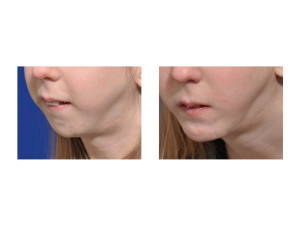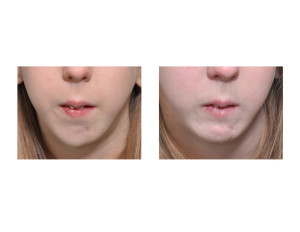Background: A sliding genioplasty is the most well known of all the facial osteotomies and also the most commonly performed. It is done for various chin augmentation and reshaping purposes. It if often compared to a chin implant and doctors often tout one versus the other for aesthetic chin augmentation. But the reality is that both have their place and their benefits vs liabilities must be evaluated on an individual basis.
The advantage of a sliding genioplasty is that it is very versatile in terms of dimensional changes of the chin. The bone cuts can be devised to bring the chin forward, make it vertically longer, widen or narrow it or almost any combination thereof. With the use of today’s plate and screw designs, the genioplasty no longer just as to ‘slide’ forward to make for a stable dimensional change to the chin.
In a sliding genioplasty the amount of forward movement of the chin is limited to the anteroposterior thickness of the mandibular symphysis. In order to maintain bone contact between the upper and lower chin segments, the back edge of the downfractured and mobilized chin segment should stay in contact with the front edge of the stable upper bone segment. In doing so, the amount of horizontal advancement as well as the ability to vertically shorten the chin has its limitations.
Case Study: This 15 year-old petite female was born with a congenital condition that caused her lower jaw to be severely underdeveloped. Even though she was a teenager her dental condition did not permit her lower jaw to be brought forward as would be the ideal surgical treatment.


A jumping genioplasty is an older form of the traditional sliding genioplasty. It is rarely used today since the introduction of rigid plate and screw fixation. But in very small chins that need significant horizontal advancement and vertical shortening it can still be used.
Highlights:
1) A sliding genioplasty is a well known chin augmentation procedure that cuts and moves the symphysis of the mandible forward.
2) A jumping genioplasty maximizes the horizontal advancement of the chin bone while simultaneously shortening its vertical height.
3) In chins that are short because of significant jaw underdevelopment, they are often too long vertically as well.
Dr. Barry Eppley
Indianapolis, Indiana



